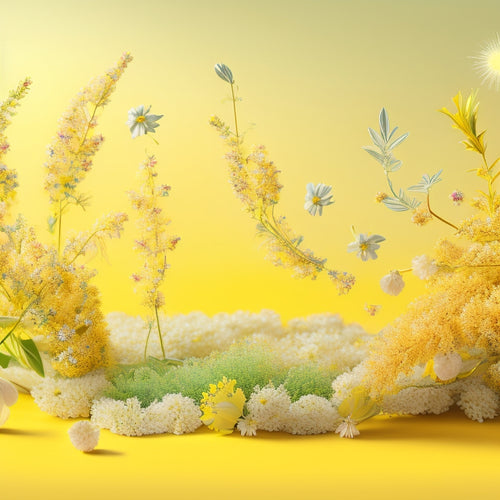
Unlocking Growth Mindset in Dance Training
Share
Developing a growth mindset in dance training is essential for achieving significant performance improvements. By fostering a growth mindset, dancers can approach challenges with confidence, resilience, and a willingness to learn and adapt. Key principles include dedication, embracing challenges, and celebrating progress for motivation. A growth mindset culture can be cultivated by focusing on effort rather than talent and viewing criticism as constructive. By adopting these principles, dancers can optimize their training and unlock their full potential. Ahead, explore the foundational elements and cultural shifts necessary to develop a growth mindset in dance training.
Key Takeaways
• Embracing challenges and corrections as growth opportunities fosters a growth mindset, leading to improved performance and increased motivation in dance training.
• Shifting focus from talent to effort and progress cultivates a growth mindset, promoting resilience and continuous learning in dance.
• Intentional instruction and guided reflection help dancers develop a growth mindset, leading to increased willingness to learn and improved performance.
• Fostering a growth mindset culture in dance training promotes a positive attitude towards feedback, criticism, and challenges, leading to enhanced growth and progress.
• By adopting a growth mindset, dancers can unlock their full potential, leading to significant performance improvements and a deeper sense of accomplishment.
Laying the Foundation for Growth
Establishing a growth mindset in dance training begins with creating an environment that fosters a culture of continuous learning and improvement, where dancers are encouraged to view challenges and corrections as opportunities for growth and development. This foundation is critical for effective skill development and student engagement.
By incorporating growth mindset techniques, such as reflection exercises, dancers can develop a deeper understanding of their learning process and identify areas for improvement. This self-awareness enables dancers to take ownership of their progress, cultivating a growth-oriented mindset.
Through intentional instruction and guided reflection, dance educators can create an environment that supports dancers in embracing challenges, persisting through setbacks, and celebrating progress – laying the groundwork for a lifelong journey of growth and development.
Principles of Growth Mindset in Dance
What are the core principles that underpin a growth mindset in dance, and how do they inform the development of a dancer's technical proficiency and artistic expression?
At its core, a growth mindset in dance is rooted in the belief that abilities can be developed through dedication and hard work. This mindset encourages dancers to embrace challenges, viewing them as opportunities for growth and improvement. By celebrating progress, no matter how small, dancers cultivate a sense of accomplishment and motivation.
This, in turn, fosters a positive attitude towards corrections and feedback, allowing dancers to see them as essential tools for growth. By internalizing these principles, dancers can unleash their full potential, leading to significant improvements in their performance and artistic expression.
Cultivating a Growth Mindset Culture
Fostering a growth mindset culture in dance requires a deliberate shift in the way instructors and dancers approach learning, feedback, and progress. This mindset shift is crucial in promoting growth and resilience in dancers. By embracing challenges and viewing failures as opportunities for growth, dancers can develop a positive attitude towards corrections and feedback.
| Fixed Mindset | Growth Mindset | Impact on Dance Training |
|---|---|---|
| Fear of failure | Embracing challenges | Increased willingness to learn |
| Focus on talent | Focus on effort | Improved performance |
| Avoidance of feedback | Seeking feedback | Enhanced growth |
| Criticism as negative | Criticism as constructive | Fostering resilience |
| Focus on outcome | Focus on progress | Promoting growth |
Frequently Asked Questions
How Do I Balance Constructive Criticism With Positive Reinforcement?
When balancing constructive criticism with positive reinforcement, employ the Feedback Sandwich method, where constructive critique is nestled between positive affirmations, and consider Critique Timing, delivering feedback when dancers are most receptive, fostering a growth-oriented mindset.
Can a Growth Mindset Be Applied to Dancers of All Ages and Levels?
"Absolutely, a growth mindset can be applied to dancers of all ages and levels, as age adaptations, level assessments, and beginner breakthroughs demonstrate; senior strategies, childhood development, and adolescent awareness further support this inclusive approach."
What Are Some Strategies for Reframing Negative Self-Talk in Dance?
To reframe negative self-talk in dance, employ self-compassion strategies, such as acknowledging emotions and practicing mindful affirmations, "I am capable and strong," to shift focus from criticism to constructive growth, fostering a positive mindset.
How Can I Help Dancers Who Struggle With Self-Doubt and Low Confidence?
Like a master gardener nurturing a delicate bloom, you can help dancers overcome self-doubt by fostering Mindful Reflection, encouraging them to reframe negative thoughts, and offering Empathetic Feedback that sparks confidence and growth.
Are There Any Specific Exercises to Develop Resilience in Dance Training?
To develop resilience in dance training, incorporate exercises that foster mental toughness, such as emotional regulation techniques, physical drills to build endurance, visualization exercises to enhance focus, and breathing exercises to manage performance anxiety.
Related Posts
-

Winter Dance Blanket: Perfect Super Bulky Knit
The Winter Dance Blanket is a delightful super bulky knit pattern designed for effortless creation, featuring a simpl...
-

Dancing Thyme: A Digital Download Delight
Dancing Thyme, the digital download darling, boasts a flawless 100% review rating from its lone, yet effusive, review...
-

Tutu Fun: Ballet Scrunchie Cards Dance Delight
Ballet enthusiasts can elevate their dance style with unique digital downloads, specifically designed ballet-inspired...


